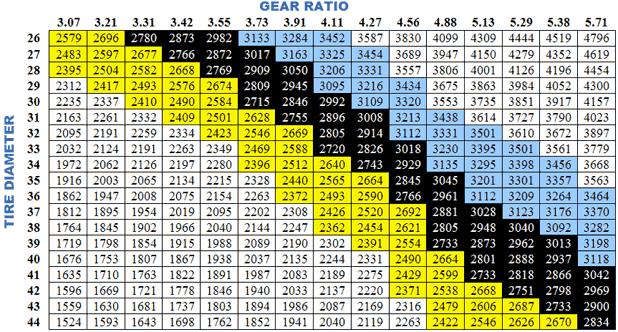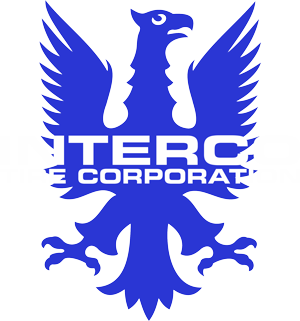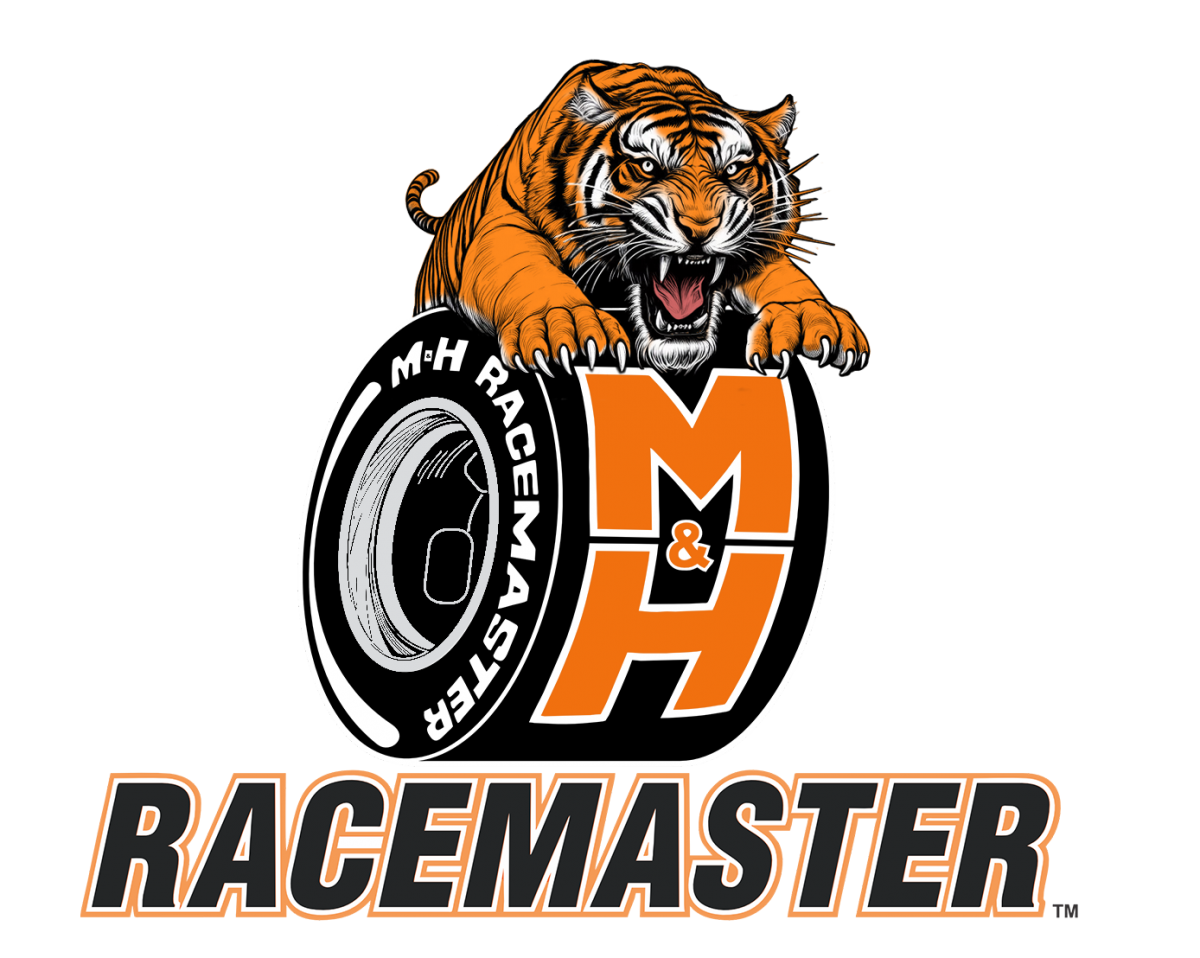GEARING UP FOR TALLER TIRES
Whenever larger-than-stock tires are installed on a truck, it will have a direct effect on the truck's performance. Why? It has to do with the effective gear ratio. Your truck comes from the factory with the optimum axle gear ratio to work with the truck's engine, transmission, and stock tire combination as well as provide a good balance between acceleration and fuel economy. When taller tires are installed on a truck but the axle ratios stay the same; the effective gear ratio is reduced. This means the engine is forced to operate below its power band, and performance and fuel economy suffer as a result. In order to restore the effective gear ratio (and the truck's performance), you'll need to have the axle gears swapped to lower (numerically higher) ratios.
Fortunately, finding the correct gear ratio to run with the tires that you plan to install is simple using a mathematical formula. There are actually several different formulas available to determine the correct ratio with varying degrees of difficulty. The simplest and most reliable method we've found is to determine what engine RPM the truck runs with the stock gears and tires at a given speed, and then closely match this rpm with the larger tires. In order to use the following formula, you'll need to know the stock axle gear ratio as well as the stock tire size. It also helps to know what RPM the truck runs at a given speed with the stock setup, but it's possible to find this information with the formula. Keep in mind all RPM readings should be taken with the transmission in a 1:1 ratio (Fourth with most manuals or third with an automatic).
The Formula
2242 = 65 x 3.08 x 336 / 30
To use an example, let's say we want to know what gears should be installed when putting 36" tires on a transmission, 3.08 gears, and 30" tires in stock form. Since the truck doesn't have a tach, we first need to find out what RPM the engine is spinning at a given speed, say 65 mph. With this information, the formula looks like this:
rpm = mph x gear ratio x 336 / tire diameter
At 65 mph, the truck's engine is spinning at 2242 rpm, which is right in the optimum power band for most V-8 engines. Now all that's left to do is plug in the new tire size and a couple different ratios available for the truck to see which one closely matches the RPM.
2263 = 65 x 3.73 x 336 / 36
As you can see from the above formula, 3.73 gears with 36" tires is optimum for restoring stock performance with this truck. Keep in mind that not all ratios are available for every axle, so do some research to make sure there's a ratio close to what you need available for your truck's axles.
One More Thing To Keep In Mind
One last note - regarding trucks equipped with overdrive. The Overdrive gear in a transmission allows the drivetrain to run below a 1:1 ratio, which brings down engine RPM for good fuel economy when running down the highway. Most Overdrive gears run somewhere around 0.73:1. As we said before, the best option for people who use the truck primarily on the street is to match the formula given above. However, Overdrive offers a unique opportunity for dedicated off-roaders. Since overdrive decreases the reduction at highway speeds, it's possible to "cheat" and select gears that are a little lower (numerically higher) for better slow gearing off-road without sacrificing highway drivability. This advantage becomes apparent when you do the math by multiplying a prospective gear ratio by the Overdrive ratio of your transmission. To use an example, 5.13 gears in a truck without an overdrive and moderate-sized tires would offer awesome slow-speed crawling ability for off-road situations but would leave the engine screaming at highway speeds. However, if the same 5.13s are installed in a truck equipped with an overdrive of 0.73:1 and we do the math (5.13 x 0.73 = 3.744), we find that the Overdrive gear gives the effect of a very streetable 3.73 ratio for highway cruising. In other words, the truck has the same good crawling speed of 5.13 gears (because Overdrive is never used off-road) combined with a very street-friendly effective ratio of 3.73 gears. Of course the engine will still rev higher on the highway compared to having the proper ratios found by following the steps we laid out earlier. Overdrive does offer dedicated four-wheelers the option of installing low, off-road friendly gears and still be able to drive around on the street with some fuel economy left intact. To plug overdrive into the gearing formula above, simply multiply the Overdrive ratio by the axle gear ratio.
The Chart
Although you should take the time to do the math and find out which ratio is best for your truck and tire combination, to make things easier we've put together the following chart. This information will give you a general idea what ratios to shop for, but always discuss your gearing needs with a professional at your local shop before buying.
The chart is divided into three categories. The rpm highlighted in black are optimum for the tire size and ratio combination. These will most closely give you the best overall drivability. If you're looking for a ratio that will give better fuel economy for highway driving at the expense of some acceleration and overall performance, choose a ratio in the yellow shaded area. If you're looking for a ratio that will improve acceleration and towing power at the expense of some fuel economy, choose a ratio in the blue shaded area.

Note: This chart is based on engine rpm at 65 mph with the transmission in a 1:1 gear ratio (Third with a three-speed manual, fourth with a four-speed manual, or third with an Automatic). Remember, the actual rpm indicated in the chart will be slightly higher (between 100 and 300 rpm) on vehicles equipped with an automatic transmission. This is due to the slip present in an auto transmission's torque converter.







